Serving 846 students in grades 6-8, Apple Valley Middle School ranks in the bottom 50% of all schools in North Carolina for overall test scores (math proficiency is bottom 50%, and reading proficiency is bottom 50%).
The percentage of students achieving proficiency in math is 44% (which is lower than the North Carolina state average of 51%). The percentage of students achieving proficiency in reading/language arts is 40% (which is lower than the North Carolina state average of 50%).
The student:teacher ratio of 16:1 is higher than the North Carolina state level of 15:1.
Minority enrollment is 51% of the student body (majority Hispanic), which is lower than the North Carolina state average of 57% (majority Black and Hispanic).
Quick Stats (2025)
- Grades: 6-8
- Enrollment: 846 students
- Student:Teacher Ratio: 16:1
- Minority Enrollment: 51%
- Overall Testing Rank: Bottom 50% in NC
- Math Proficiency: 44% (Btm 50%)
- Reading Proficiency: 40% (Btm 50%)
- Science Proficiency: 62% (Top 50%)
- Source: National Center for Education Statistics (NCES), NC Dept. of Education
School Overview
Apple Valley Middle School's student population of 846 students has declined by 6% over five school years.
The teacher population of 54 teachers has declined by 6% over five school years.
Grades Offered
Grades 6-8
(offers virtual instruction)
(offers virtual instruction)
Total Students
846 students
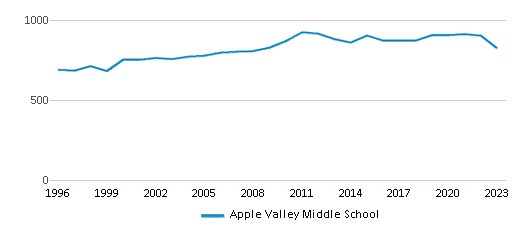
Gender %
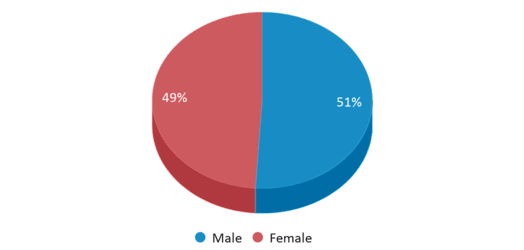
Total Classroom Teachers
54 teachers
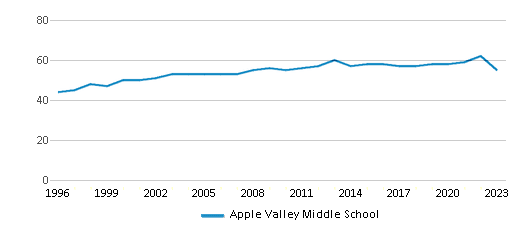
Students by Grade

School Rankings
Apple Valley Middle School ranks within the bottom 50% of all 2,617 schools in North Carolina (based off of combined math and reading proficiency testing data).
The diversity score of Apple Valley Middle School is 0.59, which is less than the diversity score at state average of 0.71. The school's diversity has stayed relatively flat over five school years.
Overall Testing Rank
#1726 out of 2617 schools
(Bottom 50%)
(Bottom 50%)

Math Test Scores (% Proficient)
44%
51%
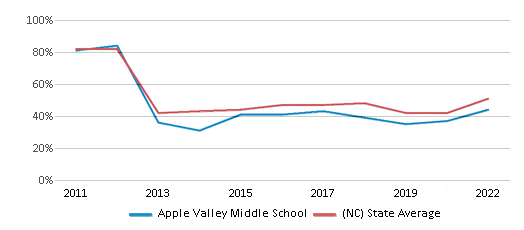
Reading/Language Arts Test Scores (% Proficient)
40%
50%
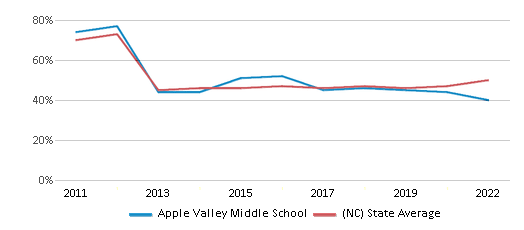
Science Test Scores (% Proficient)
62%
63%
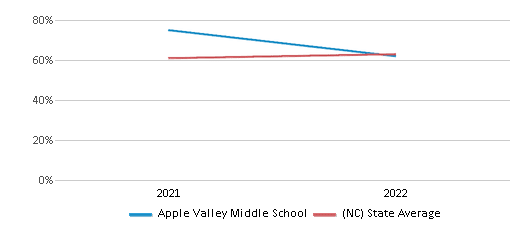
Student : Teacher Ratio
16:1
15:1
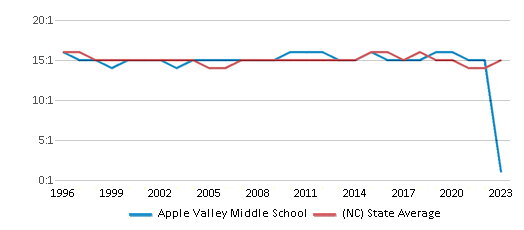
American Indian
n/a
1%
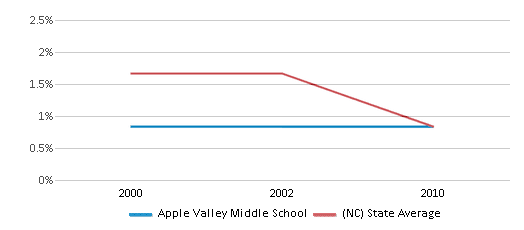
Asian
1%
4%

Hispanic
41%
21%
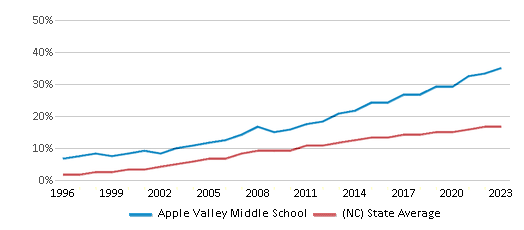
Black
3%
25%
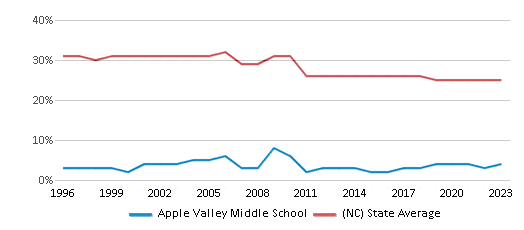
White
49%
43%
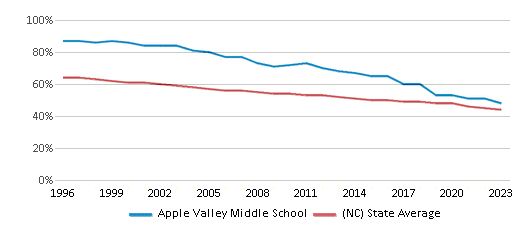
Hawaiian
1%
n/a
Two or more races
5%
6%
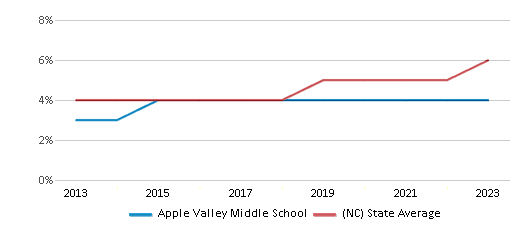
All Ethnic Groups
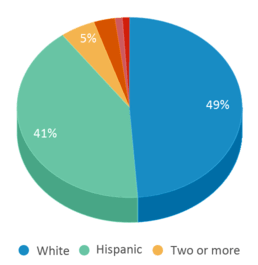
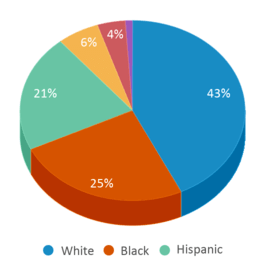
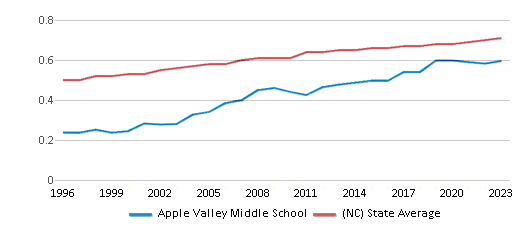
Participates in the National School Lunch Program (NSLP)
Yes
Eligible for Free Lunch
100%
68%
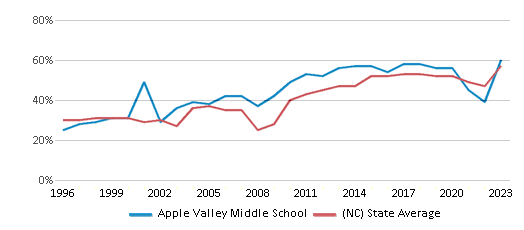
Eligible for Reduced Lunch
7%
3%
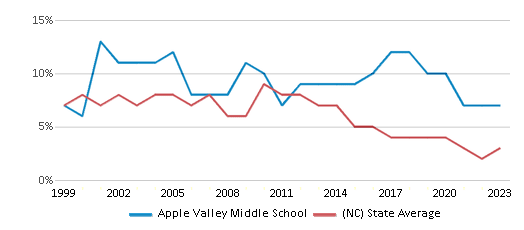
School Statewide Testing
School District Name
Source: National Center for Education Statistics (NCES), NC Dept. of Education
Profile last updated: 02/09/2025
Frequently Asked Questions
What is Apple Valley Middle School's ranking?
Apple Valley Middle School is ranked #1726 out of 2,617 schools, which ranks it among the bottom 50% of public schools in North Carolina.
What schools are Apple Valley Middle School often compared to?
Apple Valley Middle Schoolis often viewed alongside schools like Rugby Middle School, Hendersonville Middle School by visitors of our site.
What percent of students have achieved state testing proficiency in math and reading?
44% of students have achieved math proficiency (compared to the 51% NC state average), while 40% of students have achieved reading proficiency (compared to the 50% NC state average).
How many students attend Apple Valley Middle School?
846 students attend Apple Valley Middle School.
What is the racial composition of the student body?
49% of Apple Valley Middle School students are White, 41% of students are Hispanic, 5% of students are Two or more races, 3% of students are Black, 1% of students are Asian, and 1% of students are Hawaiian.
What is the student:teacher ratio of Apple Valley Middle School?
Apple Valley Middle School has a student ration of 16:1, which is higher than the North Carolina state average of 15:1.
What grades does Apple Valley Middle School offer ?
Apple Valley Middle School offers enrollment in grades 6-8 (offers virtual instruction).
What school district is Apple Valley Middle School part of?
Apple Valley Middle School is part of Henderson County Schools School District.
School Reviews
4 2/17/2020
Great school, but the only issue I have is with the librarian who feels she has the right to indoctrinate students with her anti-American ideology. She promotes her radical views by being verbal and displaying her beliefs throughout the library for students to view. She needs to keep her political opinions to herself and perhaps turn off the television, do factual research, and educate herself a bit more on politics. Its teachers like her who ruin the young minds of our children and give their schools a bad name. Also, some of her choice in books for the children to check out from the library is not educational, yet utter garbage with extreme foul language and violence/murder. This sort of literature does not belong in children's library, let alone a school!!
2 4/7/2017
The school is bad but the soccer team is good
5 8/21/2014
Apple Valley Middle is a wonderful school with great teachers. The campus is one of the most beautiful I have seen. My child has had a great experience at Apple Valley Middle.
Review Apple Valley Middle School. Reviews should be a few sentences in length. Please include any comments on:
- Quality of academic programs, teachers, and facilities
- Availability of music, art, sports and other extracurricular activities
Recent Articles

What Is A Charter School?
Explore the world of charter schools in this comprehensive guide. Learn about their history, how they operate, and the pros and cons of this educational innovation. Discover key facts about charter schools, including admission policies, demographics, and funding, as well as what to look for when considering a charter school for your child.

10 Reasons Why High School Sports Benefit Students
Discover the 10 compelling reasons why high school sports are beneficial for students. This comprehensive article explores how athletics enhance academic performance, foster personal growth, and develop crucial life skills. From improved fitness and time management to leadership development and community representation, learn why participating in high school sports can be a game-changer for students' overall success and well-being.

February 05, 2025
Understanding the U.S. Department of Education: Structure, Impact, and EvolutionWe explore how the Department of Education shapes American education, from its cabinet-level leadership to its impact on millions of students, written for general audiences seeking clarity on this vital institution.









